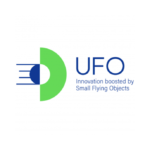ABOUT THE PROJECT
A drone-based digital assistant for ports and marinas empowered with Artificial Intelligence and edge. Diorama innovates by using semi-autonomous Small Flying Objects (SFOs) to act as digital assistants that improve the daily operations and management of ports and marine infrastructures, with a direct positive impact on the coastal and water environment. Diorama is a highly ambitious project that intends to revolutionize the way that tourist ports and marinas organize, monitor and handle their daily activities, protect the sea and coastal environment and improve the quality of services for sea travelers and marina visitors.
Intelligent maritime describes the orchestration of technology across ships and ports, enabling ship and port operators to achieve critical safety, security, and efficiency objectives. As technology evolves for maritime operations, more data can be captured, analyzed, and acted upon to better optimize systems and enable new revenue opportunities and business outcomes. The project Diorama is introducing an innovative and disruptive solution for the blue economy and specifically for the tourist ports and marinas around the globe.
Diorama will deliver a multitude of value-added services that work towards the digital transformation of the marinas and port infrastructure. SFOs are used in the yachting industry market to create new services and increase the value of the existing ones, giving a competitive advantage to the early-adopting companies to disrupt a niche growing market with highly innovative offerings. Diorama will demonstrate how SFOs can significantly improve:
- the travel experience for high-end tourists: Parking assistance to yachts entering the port, by automatically assessing the length/breadth and suitably selecting the berth.
- the management of critical infrastructures: Port facility inspection and security assessment, by using an SFO on-demand to automatically orbit an area of interest and enhance situational awareness through a point-of-view.
- the identification of pollution in the marine area of the harbor and coastal area: Maritime pollution and debris survey, by producing bird-eye views of the vertical cross-shore spatial distribution and allowing long-term frequently-sampled monitoring of pollution.
